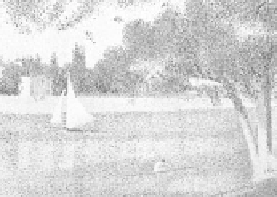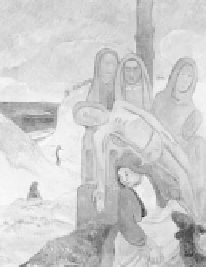Travel Reference
In-Depth Information
This work is from late in Rubens' long and very successful
career. He got a second wind in his 50s, when he married 16-year-
old Hélène Fourment. She was the model for Veronica, who con-
soles the faltering Christ in this painting.
•
To get to the Modern Art wing, return to the ground floor and the
large main entrance hall of the Ancient Museum. From there, a pas-
sageway leads to the Modern Art Museum. Once in the Modern Art
wing (entering on Level -3), take the elevator—which is so slow, they
actually provide chairs inside the elevator itself—down to the lowest
level (-8), filled with paintings from the 19th and 20th centuries. Work
your way back up, keeping an eye out for the paintings described below.
Enlist the help of nearby guards if you can't find any of these pieces.
mOdERN ART
• Watch Impressionism turn to Post-Impressionism in this wing, which
features both. Paul Gauguin and Georges Seurat emerged from Paris'
Impressionist community to forge their own styles. Begin by visiting
with...
Georges Seurat (1859-1891)—
The Seine at Grand-Jatte
(
La Seine à la Grande-Jatte,
1888)
Seurat paints a Sunday-in-the-park view from his favorite
island in the Seine. Taking
Impressionism to its extreme,
he builds the scene out of
small points of primary col-
ors that blend at a distance
to form objects. The bright
colors capture the dazzling,
sunlit atmosphere of this hazy
day.
Paul Gauguin (1848-1903)—
Breton
Calvary
(
Calvaire Breton,
1889; a.k.a.
The Green Christ/Le Christ Vert
)
Paul Gauguin returned to the bold, black,
coloring-book outlines of more Primitive
(pre-3-D) art. The Christian statue and
countryside look less like Brittany and more
like primitive Tahiti, where Gauguin would
soon settle.
James Ensor (1860-1949)—
Shocked Masks (1883)
At 22, James Ensor, an acclaimed child prodigy, proudly pre-
sented his lively Impressionist-style works to the Brussels Salon





















